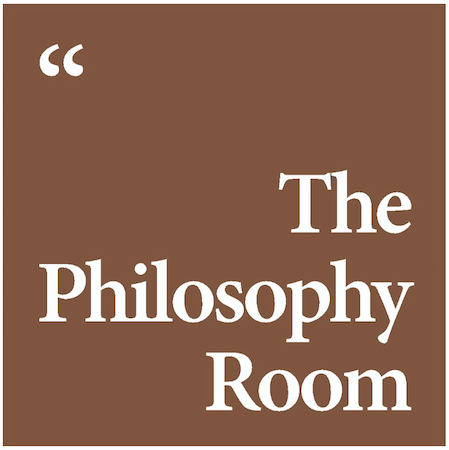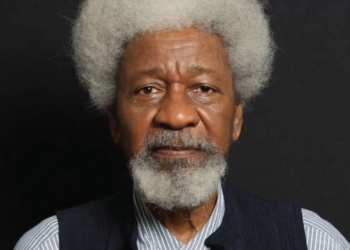Aristotle’s Theory of Causation
1) Four kinds of Causes
Aristotle’s Theory of Causation is a foundational aspect of his philosophy, and at its core are the Four Kinds of Causes. Aristotle believed that these causes were essential for understanding the underlying principles behind any event or phenomenon. These four causes are: the Material Cause, the Formal Cause, the Efficient Cause, and the Final Cause.
The Material Cause is the first element of Aristotle’s theory. It refers to the substance or material from which something is made. For instance, if we consider a wooden table, the material cause would be the wood itself. Aristotle believed that understanding this cause helps us comprehend the physical properties and characteristics of an object.
The second cause, the Formal Cause, relates to the essential form or design of an object. It involves the blueprint or the idea that defines the thing in question. In the case of a sculpture, the formal cause is the mental concept the artist has in mind before creating the sculpture. This cause helps us understand the specific characteristics and qualities of an object.
The Efficient Cause is the third cause, and it deals with the agent or force responsible for bringing an object into existence. It is essentially the cause-and-effect relationship that explains how something comes to be. In the example of a painting, the artist is the efficient cause as they apply paint to the canvas. Aristotle emphasised this cause as it helps us understand the processes and actions that lead to the creation of an object.
Lastly, the Final Cause is the ultimate purpose or goal behind an object’s existence. It answers the question of why something was made or what purpose it serves. For a medical diagnosis, the final cause is the restoration of health. Aristotle believed that understanding the final cause is crucial for grasping the true meaning and significance of an object or event.
These Four Kinds of Causes, according to Aristotle, work together to provide a comprehensive understanding of the world around us. By analysing these causes, he aimed to unravel the complex web of causation underlying all natural phenomena and human creations. This theory not only laid the foundation for the development of modern science but also profoundly influenced philosophy, theology, and various other fields of study.
2) Material Cause
The Material Cause, in Aristotle’s Theory of Causation, constitutes one of the four fundamental causes that he believed are essential for understanding the nature of an object or event. The Material Cause deals primarily with the substance or material from which something is composed. This cause provides us with insight into the physical aspect and the underlying matter that constitutes an object.
Aristotle’s emphasis on the Material Cause is rooted in his belief that every entity in the natural world has a material basis. For example, if we consider a ceramic vase, the Material Cause of this vase would be the clay or ceramic material from which it was crafted. In this case, the material cause helps us comprehend the tangible properties of the vase, such as its weight, texture, and durability.
The Material Cause is especially significant in the realm of science and philosophy. It plays a crucial role in the classification and categorization of objects based on their material composition. By identifying the material cause, we gain a fundamental understanding of the substance that forms the foundation of an object’s existence.
Aristotle’s exploration of the Material Cause also extended to the realm of metaphysics, where he delved into the nature of reality itself. He argued that the material cause is interconnected with the other three causes—Formal, Efficient, and Final—forming a holistic view of causation. For Aristotle, understanding what something is made of (Material Cause) is essential in comprehending its essence (Formal Cause), its origin (Efficient Cause), and its purpose (Final Cause).
3) Formal Cause
The Formal Cause, as elucidated in Aristotle’s Theory of Causation, constitutes another pivotal element in his philosophical framework for understanding the nature of objects and events. This cause pertains to the essential form or structure of a thing—the blueprint or design that defines its unique identity.
Aristotle believed that alongside the Material Cause, which accounts for the substance or material composition of an object, the Formal Cause is crucial in grasping the true essence of that object. The Formal Cause is essentially the “whatness” or “what it is” of an entity.
To illustrate this concept, consider a classic example: a sculpture. In the case of a sculpture, the Material Cause would be the type of material used, such as marble or clay. However, the Formal Cause transcends mere materiality. It encompasses the sculptor’s vision, the artistic concept or idea that the sculptor has in mind before even starting the work. It is the unique form that the sculptor seeks to bring into existence. The Formal Cause, therefore, helps us understand the specific characteristics, shape, and structure that define the sculpture as a work of art.
Aristotle believed that identifying the Formal Cause is essential for a comprehensive understanding of the world. It is not enough to know what something is made of (Material Cause); one must also grasp its inherent design and form. This concept is not confined to the arts but extends to all aspects of reality. In the realm of natural sciences, it implies that each species of living organisms has a unique form or essence that distinguishes it from others. In ethics and politics, it suggests that societies and individuals have a “telos” or purpose that defines their proper function and excellence.
4) Efficient Cause
The Efficient Cause, within the framework of Aristotle’s Theory of Causation, represents a pivotal element in his philosophical exploration of causality. This concept underscores the notion of causation as a dynamic process, focusing on the agent or force responsible for bringing about an event or the creation of an object.
Aristotle believed that to gain a comprehensive understanding of any phenomenon or occurrence, it was imperative to identify and analyze the Efficient Cause. Unlike the Material Cause, which deals with the material substance, and the Formal Cause, which pertains to the essential form or design, the Efficient Cause dives into the actual mechanisms and actions leading to an outcome.
To illustrate this concept, consider the construction of a building. In this context, the Efficient Cause would be the construction crew, architects, engineers, and the various labourers involved. These individuals and their collective efforts represent the efficient or causal agents responsible for the building’s creation. Aristotle would argue that understanding the role and actions of these agents is essential for comprehending both how and why the building came into existence.
Aristotle’s exploration of the Efficient Cause extended beyond physical processes. He applied this concept to ethics and human actions as well. In this context, the Efficient Cause implies that individuals’ choices and actions are the causal agents behind their moral outcomes. In essence, understanding the Efficient Cause in ethics enables us to grasp the ethical implications of human behaviour and the consequences of our actions.
5) Final Cause
Within Aristotle’s Theory of Causation, the Final Cause stands as a crucial concept that helps illuminate the underlying purpose or telos behind an object, event, or action. Also known as the Telos or the End Cause, the Final Cause delves into the ultimate aim or goal that an entity is intended to achieve.
Aristotle believed that identifying the Final Cause was indispensable for achieving a complete understanding of any phenomenon. This cause goes beyond the immediate physical or material aspects (Material Cause), the form or design (Formal Cause), or the processes and agents involved (Efficient Cause). Instead, it directs our attention to the overarching purpose that drives an entity’s existence or an event’s occurrence.
To illustrate the concept of the Final Cause, consider the example of a seed growing into a tree. In this case, the Final Cause is the tree itself, as it represents the ultimate purpose or goal of the seed’s existence. Aristotle would argue that comprehending this Final Cause—the mature tree—helps us understand why the seed sprouts, develops roots, and grows into a plant. The Final Cause, therefore, serves as a guiding principle that influences the development and evolution of the seed.
Aristotle applied the concept of the Final Cause to a wide range of phenomena and disciplines. In ethics, he argued that human actions should be evaluated based on their alignment with the ultimate human good, which he referred to as “eudaimonia.” This concept of eudaimonia represents the Final Cause of human life, as it signifies the highest achievable state of flourishing and well-being.
6) Criticisms of Theory
Aristotle’s Theory of Causation, while influential and foundational in the history of philosophy, has not been without its share of criticisms and challenges. One significant criticism is related to the complexity and applicability of the theory. Some critics argue that Aristotle’s four causes—Material, Formal, Efficient, and Final—can be overly intricate and may not always provide a straightforward explanation for every phenomenon. In a world where scientific explanations often seek simplicity and generalizability, the intricate nature of Aristotle’s theory can appear cumbersome.
Another criticism pertains to the concept of teleology inherent in the theory, particularly in the Final Cause. Critics have argued that attributing purpose or end goals to natural phenomena can be anthropocentric and may not always reflect the reality of the natural world. In modern science, explanations tend to focus on causal relationships without necessarily ascribing intention or purpose to events, making Aristotle’s teleological approach less appealing to some.
Additionally, Aristotle’s Theory of Causation has been criticized for its limited compatibility with modern scientific paradigms. While it laid the groundwork for early scientific inquiry, contemporary science often relies on reductionist approaches and quantitative analysis, which may not align seamlessly with Aristotle’s holistic and qualitative perspectives.
Furthermore, the theory has been challenged on the grounds of its metaphysical assumptions. Critics argue that Aristotle’s metaphysical framework, which includes the notion of substantial forms and essences, does not correspond to contemporary metaphysical views. This misalignment can make it challenging to integrate Aristotle’s theory into modern philosophical discourse.












